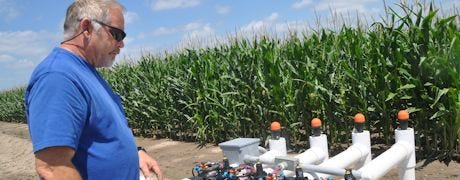
Sub-surface drip tape irrigation is growing in Kansas.
During this year's 3i Show in Dodge City, Netafim Central Plains district sales manager, Jan Windscheffel, said Kansas has more than 50,000 acres of crops in drip irrigation and the industry is growing as fast as new systems can be installed.
"The pace is limited by the seasonality of being able to install and the length of time an installation takes," he said. "It takes about 10 days to two weeks to complete an installation. And you can't work when it's too wet or too cold. But we are putting in systems about as fast as we can."

The slideshow below offers a look at some of the particulars of drip irrigation and how it works. You will find more about drip system and Eitel's experience with them in the September issue of Kansas Farmer.
Netafim's latest addition to dealerships is an expansion of Moundridge-based Heartland Irrigation to a branch location in Larned.
Brian Wedel, co-owner of Heartland, says demand for drip systems is growing fast in western Kansas, led by farmers who have been using flood irrigation and want a way to get better use of their water and improve crop performance.
"For some reason, drip systems are proving more effective in western Kansas than in eastern Kansas where they have been most prevelant," Wedel said. "I don't know why that is, but I speculate it might be because the elevation is higher and the nights are cooler, which helps water go farther."
One farmer who knows how much drip adds to farmer in the arid High Plains is Mark Eitel, who farms near Dighton in Lane County, where the past two years have been the driest on record in Kansas.
Eitel says he had an average corn crop in 2012 on drip tape irrigation while most of his neighbors, even those with center pivots, lost their corn crop to drought.
About the Author(s)
You May Also Like




